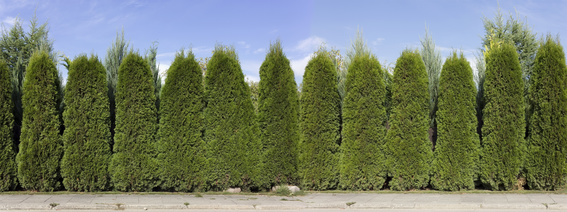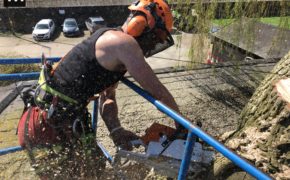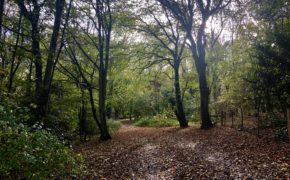
Get a quick no obligation quote It’s free and will only take a jiffy!
The Law on Trees and Tree Work
When you’re thinking about having tree work carried out, you may be surprised to learn that there is lots more to consider than what to have done and how much it’s going to cost.
Did you know for example that there are numerous laws governing what can and can’t be done in the way of tree work? The time of year, the tree’s location, the notability of the tree and the title deeds of a piece of land can all have an impact on whether work can go ahead and the extent of work which is allowed.
In this post we’re going to take a look at some of the most common factors affecting tree work. It is important to consider that it is the responsibility of both the tree worker and the owner of the land that the tree is growing on, to ensure compliance with the law. Let’s take a look and see what’s involved.
Tree Preservation Orders
A Tree Preservation Order (TPO) is made by a local planning authority in England. It exists to protect specific trees, groups of trees or woodlands. TPOs prohibit topping, lopping, cutting down, uprooting, wilful damage or destruction to trees without the written consent of the local planning authority. The cutting of roots is also a prohibited activity in the eye of the Secretary of State, and as such also calls for consent from the planning authority.
TPOs set out certain responsibilities to tree owners. If you have a protected tree on your land, then you must not undertake any of the prohibited activities yourself, neither are you allowed to allow these activities to be carried out by someone else, or cause them to be necessary.
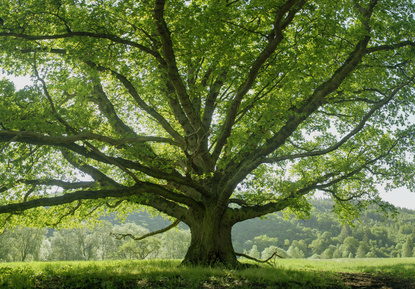
TPOs prohibit topping, lopping, cutting down, uprooting, wilful damage or destruction to trees without the written consent of the local planning authority.
Any tree owner has responsibilities. It is a legal requirement to maintain trees on your land, TPO or no TPO; although there are no statutory laws setting out precisely what you need to do, how often and to what standard. There is no requirement to undertake tree maintenance work just because it is protected, although the planning authority will often encourage good tree management with a view to enhancing the amenity provided by the protected trees.
Official government advice states that advice from competent contractors and consultants (or the authority) will help inform tree owners of their responsibilities and options. The advice also states the importance of inspecting trees on a regular basis and carrying out regular maintenance to ensure they remain safe and healthy.
The laws applying to trees and Tree Preservation Orders are:
- Part VIII of the Town and Country Planning Act 1990 as amended
- Town and Country Planning (Tree Preservation) (England) Regulations 2012
- Section 192 of the Planning Act 2008
- Part 6 of the Localism Act 2011 amended section 210 of the Town and Country Planning Act 1990
Any local planning authority can make a TPO if it appears to them to be ‘expedient in the interests of amenity to make provision for the preservation of trees of woodlands in their area’. It’s quite common for local planning authorities to issue TPOs when certain trees are under threat from development. Trees may be identified for a TPO on their individual merit or because a certain species of tree needs prioritising for certain reasons. Individual trees can be protected as can groups within an area or entire woodlands. There is no restriction on the size or species of tree that can fall under a TPO and no trees are automatically protected.
Shrubs and hedges are not ordinarily protected by a TPO, although it is possible for planning authorities to use an Order to protect anything that may be classed as a tree. So for example, if you have a hedge that is made up of trees of a certain height, for example a beech hedge, then these may be protected.
Work on trees governed by TPOs is not banned outright, but you will need to apply to the local planning authority for permission to proceed. If you go ahead without permission, you could be subject to an unlimited fine.
Need help making an application to work on a tree protected by a Tree Preservation Order? T.H. Tree Services can help by collating all the information and advice required to support your application.
Conservation Areas
For trees in conservation areas, standard TPO regulations apply to trees already protected. For those that aren’t, written notice to the local planning authority is still required for any proposed work. This must be provided at least six weeks in advance of the work commencing. It’s known officially as a ‘Section 211 Notice’. If the tree is less than 75mm in diameter, measures 1.5 metres above the ground (or 10cm where thinning is required to assist the growth of surrounding trees), then no notice is required.
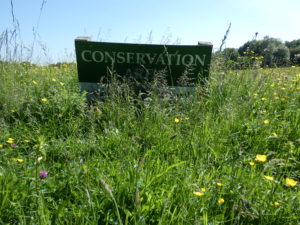
For trees in conservation areas, standard TPO regulations apply to trees already protected. For those that aren’t, written notice to the local planning authority is still required for any proposed work.
There’s more information on the government guidance pages covering TreePreservation Orders and trees in conservation areas.
Countryside Hedgerows
The removal of countryside hedgerows is also regulated. They are protected if they meet set criteria for length, location and importance and are on or adjacent to land used for forestry or agriculture; land used for breeding or keeping horses, ponies or donkeys; a national or local nature reserve; Crown land; common land; village greens; a protected European site or a site of special scientific interest (see below).
This protection does not apply to hedgerows within or marking the boundaries of private gardens.
Sites of Special Scientific Interest (SSSI)
Sites of Special Scientific Interest are designated by the Statutory Nature Conservation Organisation (SNCO). They include particularly notable and important habitats such as heathlands; wetlands; meadows; beaches; moorland and peat bog. Each SSSI has its own management plan in place alongside a requirement for consent to carry out work of any type. Unlimited fines can be imposed should any activity be carried out that harms the SSSI.
Restrictive Covenants
Many title deeds include restrictive covenants. These are restrictions placed by the seller of land onto the buyer to prevent them doing certain things with the property or the land that it sits on. The covenants will often date back many years and were originally put in place to protect the local area and the people who live in it. The covenants usually continue through the chain of sale over very long periods of time.
Some covenants apply to trees and require the consent of third parties to undertake work on the trees on the land. They may even ban the felling of certain trees. If you believe there to be such a covenant in place on your land, you should seek legal advice before going ahead with any work.
Felling Licences
Whilst trees in residential gardens do not require a licence for felling, those situated on any other type of land may well need one. The Forestry Commission is the governing body in this respect. To find out more take a look at this Felling Licences Quick Guide.
Nesting Birds
No hedge or tree work should be undertaken during the bird nesting season. This officially runs from the end of February to the start of August, although wild birds tend to nest either side of these dates.
This is only a guideline, however under the Wildlife and Countryside Act, it is an offence to intentionally take, damage or destroy the nest of any wild bird whilst it is in use or being built, or intentionally or recklessly disturb any wild bird whilst it is nest building or at a nest containing eggs or young, or disturb the dependent young of such birds.
It is therefore vital that prior to any tree work being undertaken during the nesting season, a comprehensive analysis of the tree is conducted to make sure there are no nesting birds or eggs present. Our job is to prove to the contrary that there is no reason we shouldn’t proceed with the necessary work. We do ask our customers to bear with us should we find birds nesting, as we will have to postpone work in these cases. If we don’t, both us and the customer could face an unlimited fine.
You can learn more on the RSPB website.
Qualified Advice from Expert Tree Surgeons
If you are in any way unsure as to where you stand with proceeding with required tree work on your land, talk to the experts at T.H. Tree Services. With extensive experience and a raft of official arboriculture qualifications, we are well placed to provide you with the guidance you need to ensure your tree work falls within the law. Give us a call on 01268 642814 or get in touch here.
Had a fallen tree in the early hours of Monday morning, called for quote and the team had it cleared on the same day. Really good communication when the lads were onsite and did a great job. Lots of pride in their work shown with the thorough clear up. Would thoroughly recommend.
Thank you Stuart for your kind review. We were glad to be able to help you with your fallen tree. If there's anything else you need in the future, please don't hesitate to get in touch.

